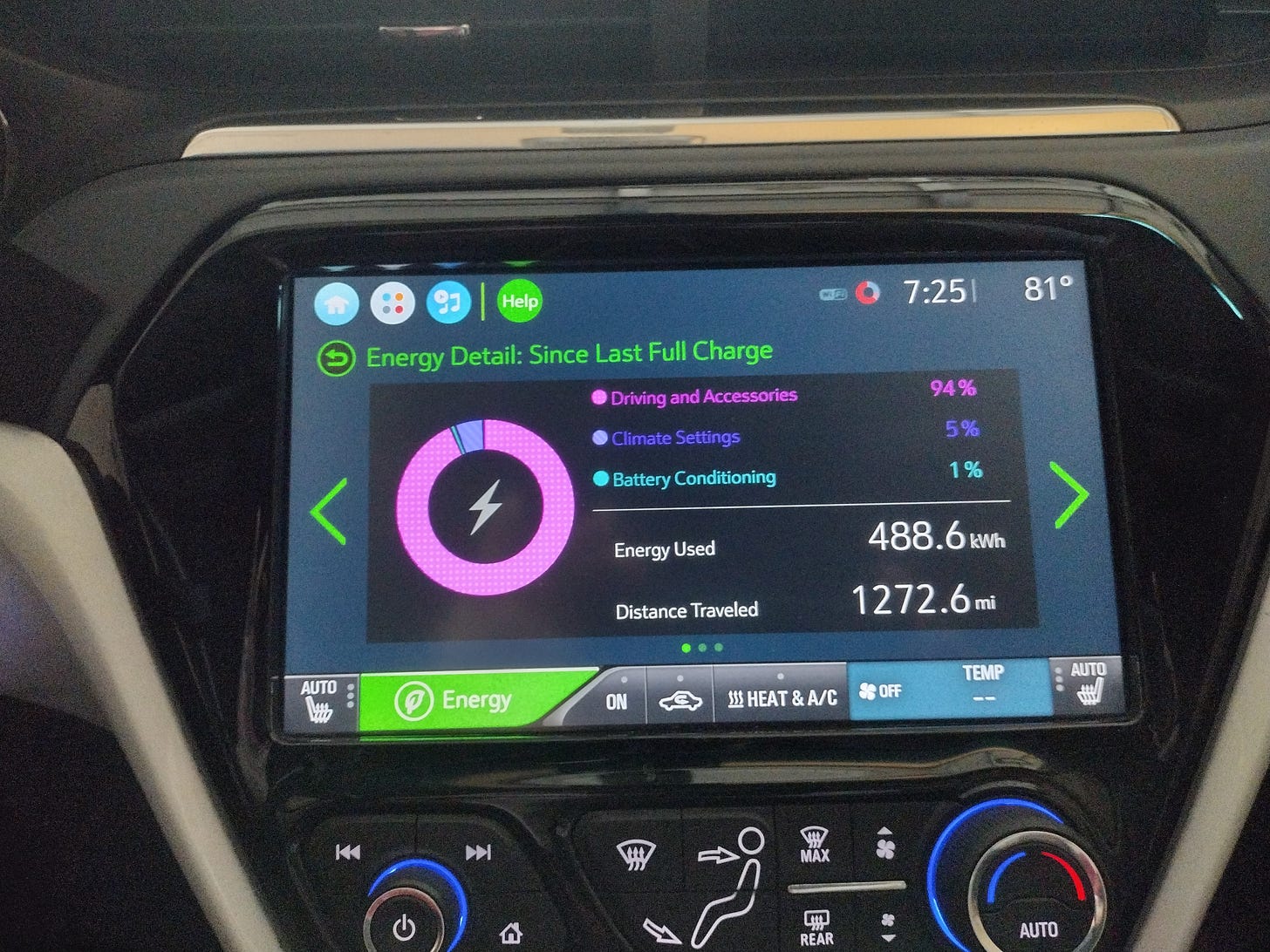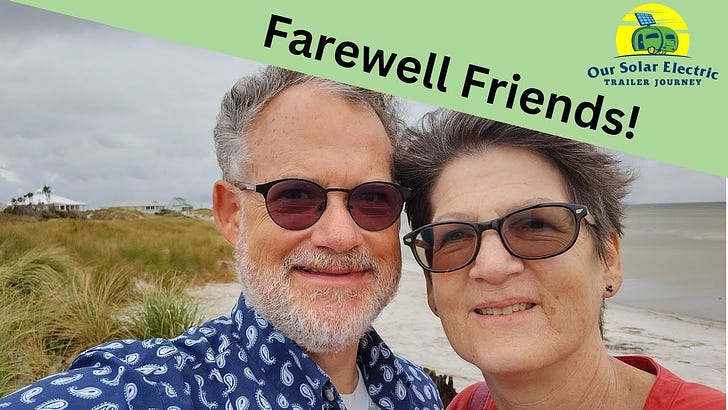We recently drove nearly 2,000 miles in our Chevy Bolt EV, traveling from Jacksonville, Florida to Houston, Texas—and back. Along the way, we learned a few things.
We logged every charge along the way and tallied the cost. (See lesson 13 below.)
The price per kWh varied dramatically. We charged almost exclusively with Electrify America. In every case on this trip, the company billed us per minute. Because the rate of charging varies, the cost per kWh varies.
The lowest price per kWh was $0.14—that’s less than what we pay at home!
It is easy to find chargers for road trips. That’s a significant change from three years ago.
We discovered a new-to-us app, A Better Route Planner. It is super helpful. People often call the app ABRP.
New Orleans is lacking in charging infrastructure. We couldn’t find a public, high-speed charger anywhere in the city.
Per-minute charging fees encourage you to quit charging when charging slows.
As a result of number 6, it’s best to charge only enough to get to the next charger plus a cushion. This makes your trip both faster and cheaper.
Electrify America is the key to driving an EV on a road trip. In the United States, it is the biggest network by location—even more places than Tesla.
Electrify America features some glitches. When it works, it is a joy to use. The reliability is improving—we’ve been road tripping with Electrify America for years. Still, glitches can lead to frustrating delays. As a result, we spent two hours on the trip on a single charge.
After driving 1958 miles, we were shocked at averaging 4 miles per kWh. We expected to be well below that level with almost entirely freeway miles with the a/c running.
It was fun to meet EV drivers and see impressive new cars. At a charging station in Houston, we spotted a pair of identical white Porche Taycans charging. At another, we spotted a Rivian, and the owner invited Gail to sit in it. She loved it! We can’t wait to get ours.
Speaking of glitches, our Chevy Bolt EV logs the kWh used and miles since the last full charge. The car stopped counting miles after 1,272.6, which made calculating our mileage a bit tricky.
We spent just $116 to drive almost 2,000 miles. The average cost per kWh was just $0.25. We found a free level 2 (6 kW) charger in New Orleans at Whole Foods and picked up about 6 kWh in an hour of free charging. If we’d had to pay for that, it would have added about a buck to the cost of the trip. Driving an EV is joyfully cheap.
Data for Nerds
Here’s our mileage log:
This chart shows how much we traveled and charged for each leg of the journey. The Yellow columns reflect data from Electrify America (except at the Whole Foods in New Orleans, where we just made an estimate). The green columns reflect data from the car. The white columns are calculations.
While Devin could write an entire post about each number on the spreadsheet, we trust no one else is that nerdy. If you have questions, post them in the comments or reply to this if you’re reading it in your email.


















Share this post